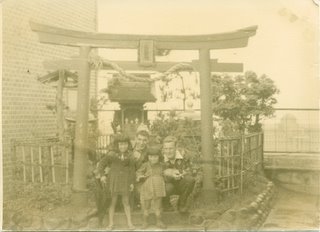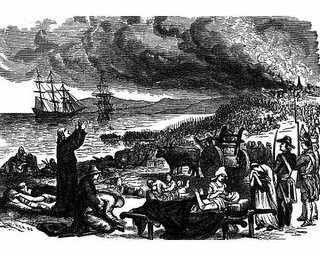
Hello friends,
Welcome to the sister site for
http://lasalettejourney.blogspot.com On these pages, the history of the Melanson Family (and most especially Camille and Rita Melanson and their family) will be presented. The name Melanson/Melancon is enshrined forever in the history of the Acadian people, a people who were persecuted for their Roman Catholic Faith and who were - in many cases - imprisoned, tortured, stripped of their land and possessions and deported from their own country.
It is our hope that these pages will shed some light on the Melanson family history and our struggle as an Acadian people to preserve our Roman Catholic Faith and Traditions as well as our cultural heritage.
Please also visit the official website of the Melanson Settlement:
http://www.pc.gc.ca/lhn-nhs/ns/melanson/index_e.aspRita Jeannine Melanson
Paul Anthony Melanson
A Brief History:The Melansons in Acadia:
Many a writer has tried to explain the origins of this family. It was generally believed that the Melansons were of Scottish origin, but this assumption was based on a historic mistake. There is no document that demonstrates that the Melansons who came to Acadia were of Scottish descent, in fact to the contrary there is proof that they were of English descent.
The two Melanson brothers, PIERRE, dit Laverdure, a stonemason, born in 1632, the spouse of Marie Marguerite Muis d'Entremont, the daughter of the Lord of Pomcoup, Philippe Mius d 'Entremont, and CHARLES, born in 1643, the husband of Marie Dugas, daughter of Armourer Abraham Dugas and Marguerite Doucet of Port Royal, arrived in Port Royal accompanied by their parents aboard the ship the Satisfaction, with Sir Thomas Temple, the new English Governor of Acadia, which arrived in 1657. During almost a century, just until the deportation of the Acadians in 1755, the settlement was the place of residence of Charles Melanson and his wife Marie Dugas, and their descendants and associates.
"The Melanson Settlement" is one of the principle Canadian archeological sites illustrating the way of rural life in Acadia in the 17th and 18th centuries. It is a mirror of the various aspects "of the daily life, their homes, material culture and their prosperity. 1755: DEPORTATION: In the Autumn of 1755, 1660 Acadians of the region of Port Royal embarked on the ships towards exile. Charles and Ambroise Melanson took refuge in Quebec, while Jean Melanson and his family were refugees in France with a group of Acadians at Cape Sable. Others were deported to Maryland and other States. The Melansons, like hundreds of other Acadians, were imprisoned in the military fortresses which were neither more or less than concentration camps. At gun point, English soldiers forced them to work for them. The Melansons were imprisoned at Forts Cumberland and Edward.
Today, this large Acadian family (the name of [MELANSON] MELANSON-MELANCON-MALANSON-MALONSON can be found in all of Canada, the United States and in France), continues to thrive. These Acadians, all descendents of PIERRE and CHARLES MELANSON, arrived in Acadia during 3 ½ centuries. The majority of Charles' descendants returned to the former Acadia, resettling in Nova Scotia and Southern New Brunswick, and in the USA in the States of Maine and Massachusetts, most continuing to spell their name Melanson, but some have changed it to Malanson and Malonson. The majority of Pierre's descendants, however, did not return, settling in Louisiana, Quebec, and Northern New Brunswick, in the Bathurst region.
It is this branch of the family that today predominately spells their name MELANCON. The only descendent of Pierre known to have returned to Nova Scotia was Charles Marie who settled in Pomquet after returning with his mother from exile in France.
Excerpted from: The Melanson Family Project
http://www.geocities.com/Heartland/Meadows/7961/The above photo was taken at a leper village in Japan, 1953. Camille Melanson is on the right. He and his friend had finished their tour in Korea and were visiting children afflicted with leprosy.






